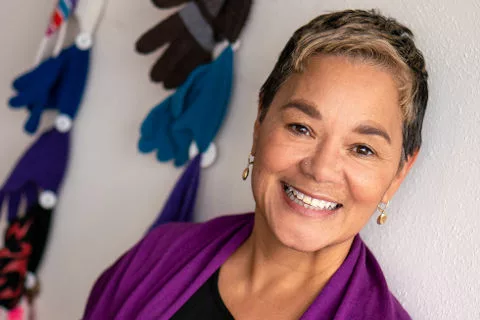20 Years of Stem Cells
University of Wisconsin researchers continue work towards new clinical applications, two decades after stem cell research began on campus.
In January 2018, Sheri Johnson, PhD, became director of the University of Wisconsin Population Health Institute (PHI) at the UW School of Medicine and Public Health (SMPH).
Before this, she was an associate professor of pediatrics at the Medical College of Wisconsin in Milwaukee and previously worked at Sinai Samaritan Medical Center, Children’s Hospital of Wisconsin and Milwaukee Health Services, Inc. She also was the state health officer in the Wisconsin Department of Health and Family Services.

Johnson earned her PhD in clinical psychology from Boston University and completed a clinical psychology internship at Children’s Hospital of Boston/Judge Baker Children’s Center and a clinical psychology fellowship at Harvard Medical School.
The PHI — and its mission to translate research for policy and practice — has existed in various ways in the Department of Population Health Sciences since 1984. It received its current structure in 2005 and recently became a stand-alone institute. It has four main initiatives: County Health Rankings and Roadmaps, Evaluation Research group, Health Policy group, and Mobilizing Action Toward Community Health.
The institute partners with public health departments, business leaders, educators, investors, advocates, government (tribal, state and local), health care providers and the public to conduct research, community-engaged programs, training and more.
What’s an example goal of the PHI?
What Works for Health (WWFH), which highlights evidence across multiple determinants of health, exemplifies how the institute translates research for practice. The database includes “evidence at your fingertips” and is a component of County Health Rankings and Roadmaps, a partnership between the PHI and Robert Wood Johnson Foundation. Evidence ratings are assigned so policymakers and practitioners understand the strength of evidence behind an approach.
What interested you in this role?
It’s a tremendous opportunity to be able to build on the PHI’s legacy. I am most interested in working to accelerate progress toward health equity. The institute’s work is influential in helping stakeholders understand and address multiple factors that influence health.
Why did you switch from clinical care to population health?
As a graduate student in the mental and social health department of a Federally Qualified Health Center in Massachusetts — through the mentorship of interdisciplinary professionals and neighborhood residents from Jamaica, Somalia, South Africa, Haiti and the United States — I learned the importance of diagnosing and treating individuals, families and communities, and the conditions that surround them.
It’s fulfilling to work with children and families faced with “problems in living” and mental illness. I’m honored to be trusted to hear about their struggles and accompany them through healing and recovery.
What is the greatest barrier to health equity in Wisconsin?
A barrier to achieving health equity is insufficient understanding about why there are differences in the distribution of social, economic, environmental and health care resources. Through a UW Native Nations Workgroup training, I learned about the history of Indian Boarding Schools in Wisconsin and how forced removal of children has impacted the health and well-being of many. I had known some aspects of this historical trauma, but the training helped me better understand how these policies and practices connect to current health disparities.
What are some of the most prevalent impacts of health equity in the state?
The most prevalent impact of health inequity is a collective loss of potential and honor.
How does the PHI interact with policy-making in Wisconsin?
The Evidence-Based Health Policy Project uses several approaches to deliver research and tools to stakeholders and policy-makers. Briefings at the State Capitol provide legislators, agency employees and others with evidence about priority issues. We also share helpful resources at UW–Madison — such as our searchable database, What Works for Health.
What are the most outstanding policy questions affecting Wisconsin?
Wisconsin’s childhood poverty rate was 16 percent as of the “2017 County Health Rankings” report, and the rate was much higher for children of color. I hope we can work together to assure that all children have the essential building blocks for long, productive, fulfilling and healthy lives.
Have you moved to Madison?
I split my time between Milwaukee and Madison. I serve as the UW–Madison representative on the Milwaukee County Mental Health Board, volunteer with Big Brothers/Big Sisters there, and spend time with my mother and friends on weekends.
In Madison, I enjoy the lakes and bike trails. I try to spend time outside as much as possible. And I love Greenbush Bakery!